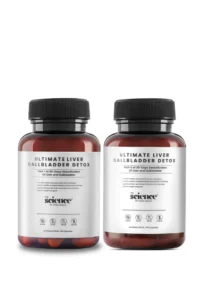If you are asking yourself what is grade 1 fatty liver, the answer is that it is the earliest and mildest stage of fatty liver disease. In this condition, excess fat begins to accumulate in the liver cells, but the liver is still able to function normally. At this stage, there is no permanent damage, and the condition is often silent without noticeable symptoms. The most important thing to know about what is grade 1 fatty liver is that it can be reversed with timely action.
This condition is becoming increasingly common due to changes in diet, sedentary lifestyles, obesity, and rising cases of diabetes. While many people discover it accidentally during medical tests, it is vital to understand it fully, because this stage is the body’s early warning signal. In this article, we will explore what is grade 1 fatty liver, its causes, symptoms, diagnosis, treatment, natural remedies, and when to seek medical help.
What is Grade 1 Fatty Liver?
To clearly understand what is grade 1 fatty liver, it helps to look at how the liver normally works. The liver is one of the most important organs in the body, responsible for detoxification, metabolism, and energy storage. When fat begins to accumulate inside the liver cells beyond normal levels, the condition is called fatty liver.
In grade 1 fatty liver, the fat deposits are still mild and do not affect the organ’s ability to function. The liver remains healthy and capable of performing its tasks. This is why doctors often describe what is grade 1 fatty liver as the “reversible stage” of liver disease.
There are two main types of fatty liver conditions:
- Alcoholic fatty liver, which develops due to regular alcohol consumption.
- Non-alcoholic fatty liver (NAFLD), which occurs in people who do not drink or drink very little alcohol but still accumulate liver fat due to diet, obesity, or other medical conditions.
The critical point to remember is that what is grade 1 fatty liver today can progress into grade 2, grade 3, or even cirrhosis if lifestyle changes are not made in time.
Causes of Grade 1 Fatty Liver
Understanding the causes of grade 1 fatty liver is essential for both prevention and treatment. Some of the most common causes include:
- Poor diet: Regular consumption of fried foods, refined carbohydrates, sweets, sugary drinks, and processed meals leads to fat buildup.
- Obesity: Excess body weight makes the liver more likely to store fat.
- Insulin resistance: A condition where the body does not respond effectively to insulin, often linked with diabetes.
- Alcohol consumption: Even moderate alcohol intake over time can damage the liver and lead to fat deposits.
- Sedentary lifestyle: Lack of physical activity slows metabolism and promotes fat storage.
- Genetic factors: A family history of fatty liver can make an individual more prone.
- Medications: Some drugs such as steroids or tamoxifen can increase liver fat.
- Rapid weight loss: Crash dieting and sudden weight changes can sometimes stress the liver.
Knowing the root causes of what is grade 1 fatty liver allows individuals to take practical steps to avoid or reverse it.
Symptoms of Grade 1 Fatty Liver
One of the biggest challenges in detecting what is grade 1 fatty liver is that it usually has no obvious symptoms. Most patients only find out about it during routine medical check-ups or imaging tests. However, some people may notice early warning signs such as:
- Persistent fatigue and lack of energy despite adequate rest
- A sense of heaviness or mild discomfort in the upper abdomen
- Unexpected weight gain or difficulty losing weight
- Sluggish digestion or bloating after meals
- Mildly elevated cholesterol or blood sugar levels during tests
Since these signs are subtle, they are often overlooked. This is why understanding what is grade 1 fatty liver and paying attention to small changes in your body can help in early detection and timely recovery.
Is Grade 1 Fatty Liver Harmful?
Many people ask if grade 1 fatty liver is harmful. The short answer is: not immediately, but it can become harmful if left untreated.
At this stage, the liver still functions well, but the presence of fat indicates the beginning of an unhealthy process. If the condition is ignored, it may progress to grade 2 fatty liver, then grade 3, and eventually to cirrhosis, which is life-threatening.
The key fact about what is grade 1 fatty liver is that it is fully reversible. With proper changes in diet, regular exercise, and a healthier lifestyle, the fat can be reduced, and the liver can return to normal.
How is Grade 1 Fatty Liver Diagnosed?
The diagnosis of what is grade 1 fatty liver usually happens in three ways:
- Blood tests: Liver function tests may show slightly raised liver enzymes.
- Imaging scans: Ultrasound is the most common tool to detect fatty liver. MRI or CT scans may be used for more detailed imaging.
- Routine health check-ups: Many people discover grade 1 fatty liver when they undergo regular check-ups for other reasons.
Since it is often silent, medical tests are the most reliable way to know whether someone has what is grade 1 fatty liver.
Treatment and Prevention Options
The treatment for grade 1 fatty liver focuses on lifestyle changes rather than medications. Key steps include:
- Adopting a healthy diet with whole grains, vegetables, fruits, lean proteins, and healthy fats
- Engaging in daily physical activity such as walking, yoga, or light workouts for at least 30 minutes
- Avoiding alcohol completely or limiting intake to protect the liver
- Managing blood sugar, blood pressure, and cholesterol levels
- Avoiding crash diets that lead to rapid weight changes
- Regular follow-up with doctors to monitor liver health
When discussing what is grade 1 fatty liver, doctors always emphasize that prevention and lifestyle management are the best treatments.
Natural and Home Remedies
Many people want to know how to reverse grade 1 fatty liver naturally. Some helpful home remedies include:
- Drinking warm lemon water in the morning to support detoxification
- Adding turmeric to meals for its anti-inflammatory benefits
- Including garlic, flaxseeds, and chia seeds for improved metabolism
- Drinking green tea regularly for better fat burning
- Practicing yoga, meditation, and proper sleep to reduce stress
These natural remedies are most effective when combined with a balanced diet and exercise. They cannot replace medical care but can strongly support recovery from what is grade 1 fatty liver.
Grade 1 vs Grade 2 vs Grade 3 Fatty Liver
The difference between the three grades of fatty liver is mainly the amount of fat, the symptoms, and the reversibility:
- Grade 1 fatty liver: Mild fat deposits, usually no symptoms, normal liver function, fully reversible
- Grade 2 fatty liver: Moderate fat deposits, symptoms such as fatigue and abdominal discomfort, slightly impaired function, reversible with effort
- Grade 3 fatty liver: Severe fat deposits, visible symptoms like pain, jaundice, swelling, major loss of function, difficult to reverse, risk of cirrhosis
This comparison highlights why early awareness of what is grade 1 fatty liver is so critical.
Myths and Facts about Grade 1 Fatty Liver
There are many misconceptions about what is grade 1 fatty liver. Here are some common myths clarified:
- Myth: Only people who drink alcohol get fatty liver
Fact: Even people who do not drink can get non-alcoholic fatty liver due to poor diet and lifestyle - Myth: Grade 1 fatty liver is harmless
Fact: It may not cause symptoms immediately, but it can progress into serious disease if untreated - Myth: Medicines are the only solution
Fact: Lifestyle changes, diet correction, and exercise are the best treatments for grade 1 fatty liver
When to See a Doctor
You should seek medical advice if you experience:
- Ongoing fatigue that does not improve with rest
- Persistent abdominal pain or bloating
- Sudden weight gain or unexplained weight loss
- Yellowing of the skin or eyes
- High cholesterol or diabetes combined with liver issues
Consulting a doctor ensures that what is grade 1 fatty liver is diagnosed correctly and managed before it progresses.
Conclusion
To summarize, what is grade 1 fatty liver is the earliest stage of fatty liver disease where mild fat deposits form inside the liver cells. While it is not immediately harmful, ignoring it can lead to more dangerous stages. The encouraging fact is that it is completely reversible through healthy eating, daily activity, weight management, and stress control. Awareness and early lifestyle changes can help protect the liver and overall health.
Don’t wait for your liver health to worsen. At Smriti Kochar’s Ultra-Wellness Program, thousands have naturally reversed chronic conditions, including fatty liver, without medicines. With a 98% success rate in just 4–6 months, you too can restore your liver health. Take the first step today, Start Your Healing Journey with Smriti Kochar.
Read Our Latest Blogs
Is An Enlarged Liver Dangerous | How To Clean Liver Naturally | Is Grade 2 Fatty Liver Dangerous | How To Detox Liver Naturally At Home | Is Eggs Good For Fatty Liver | What Is Sgpt In Liver | Is Curd Good For Fatty Liver | Is Milk Good For Fatty Liver | Is Sugarcane Juice Good For Liver | Is Beer Good For Liver | Is Coconut Water Good For Liver
Frequently Asked Questions
Grade 1 fatty liver is the mildest stage of liver fat accumulation where the organ still functions normally. It occurs due to poor diet, obesity, alcohol, sedentary lifestyle, or genetics.
No, it is not immediately dangerous, but it is a warning sign. If untreated, it can progress into advanced stages that are much harder to reverse.
Yes, it can be reversed naturally with a healthy diet, regular exercise, weight control, avoiding alcohol, and stress management.
Most people have no symptoms, but some may feel tired, gain weight, or have mild abdominal discomfort.
Doctors diagnose it through blood tests, ultrasounds, MRI scans, or during routine medical check-ups.
Sugary drinks, fried foods, processed snacks, refined carbs, and alcohol should be avoided to reduce liver fat.
With consistent lifestyle changes, many people see improvement within 3 to 6 months, but it depends on individual health.
Yes, absolutely. With proper diet, exercise, and medical monitoring, people can live a completely normal and healthy life.





